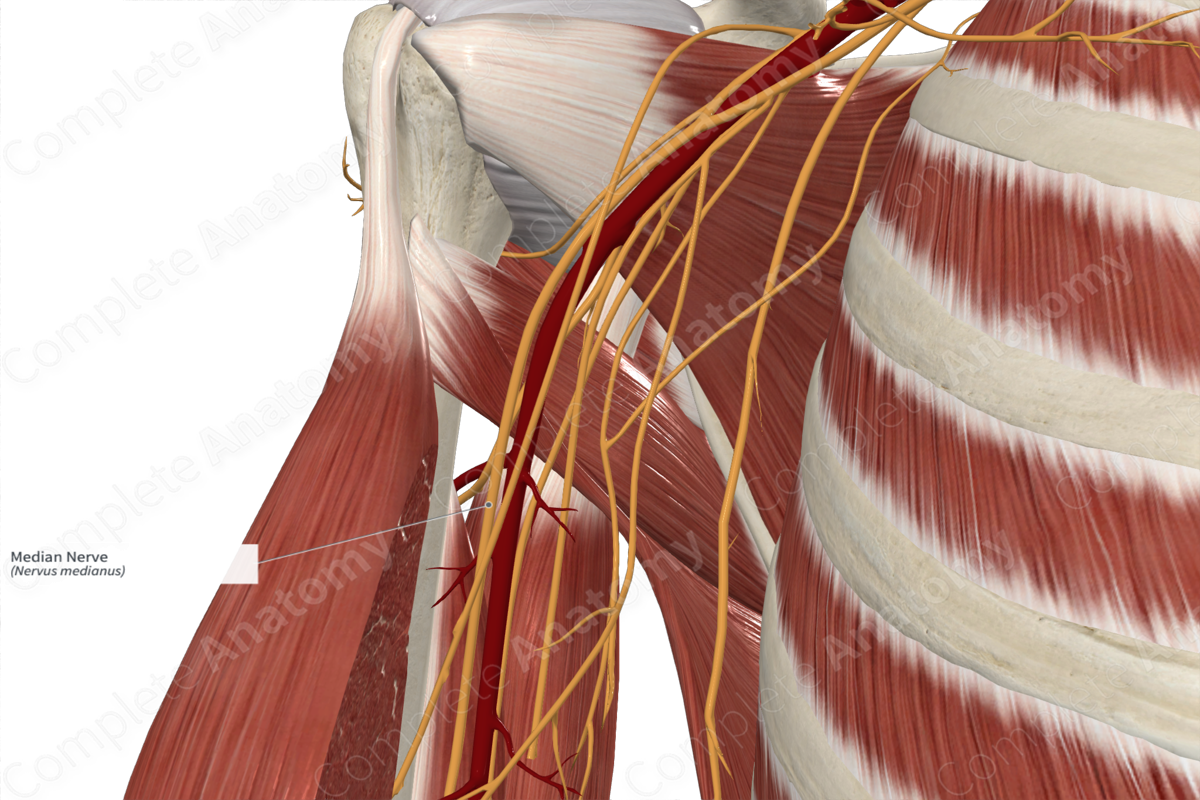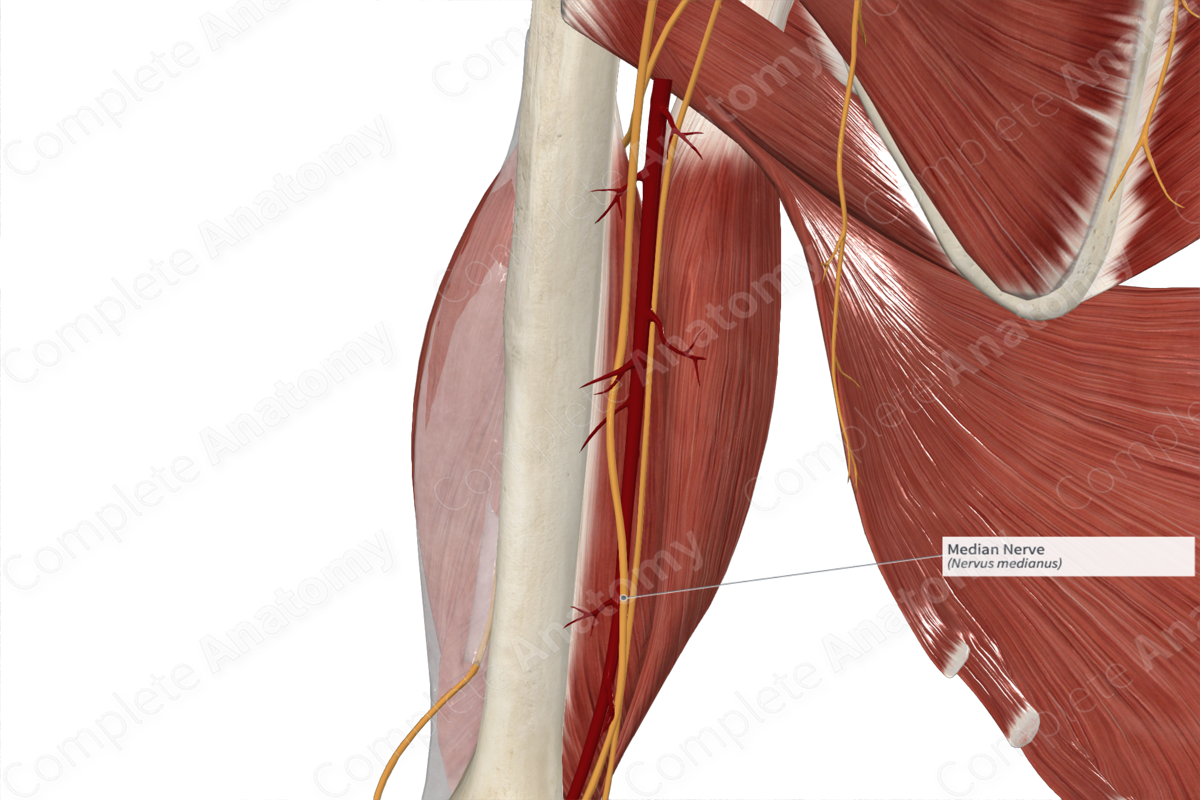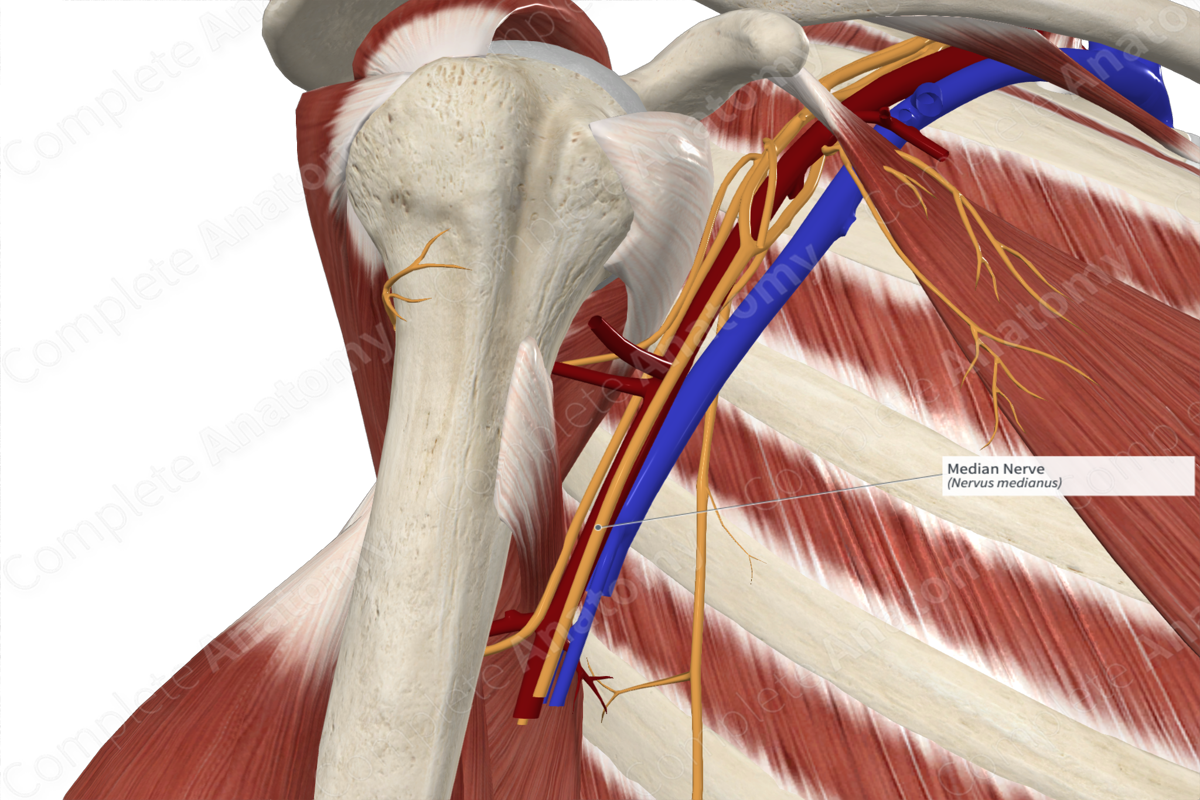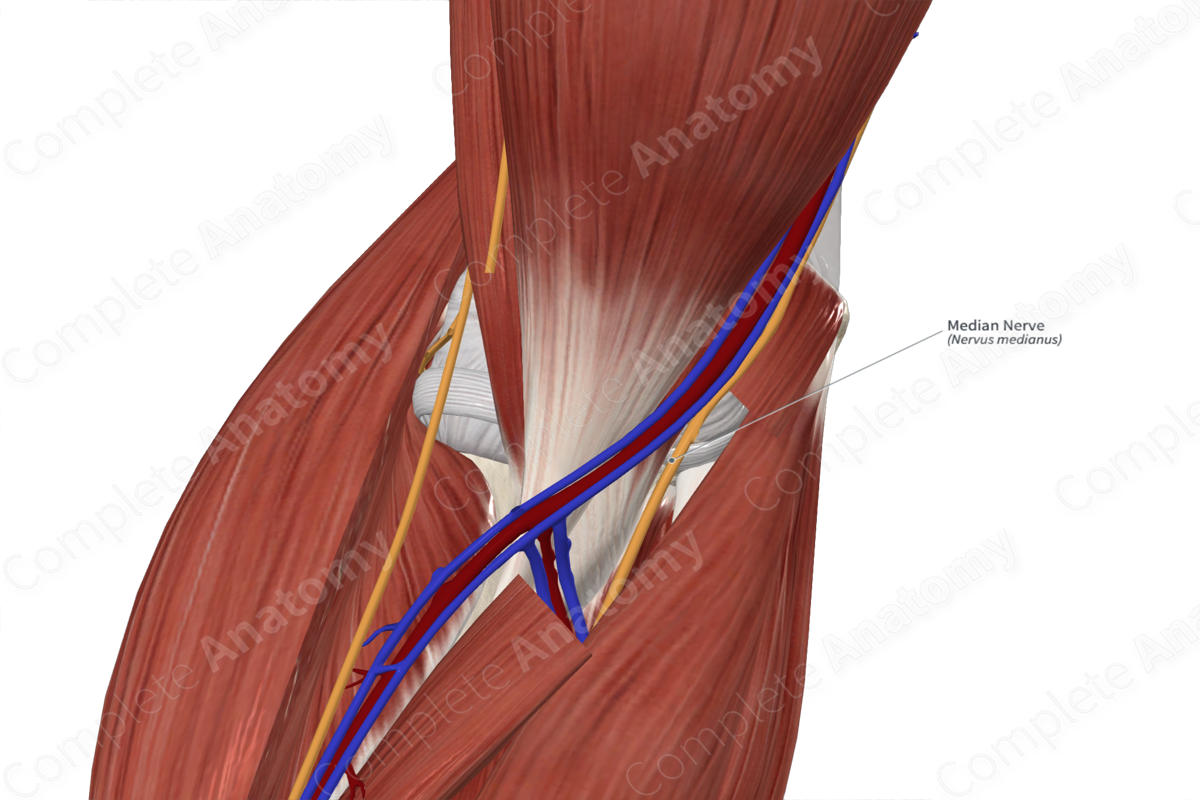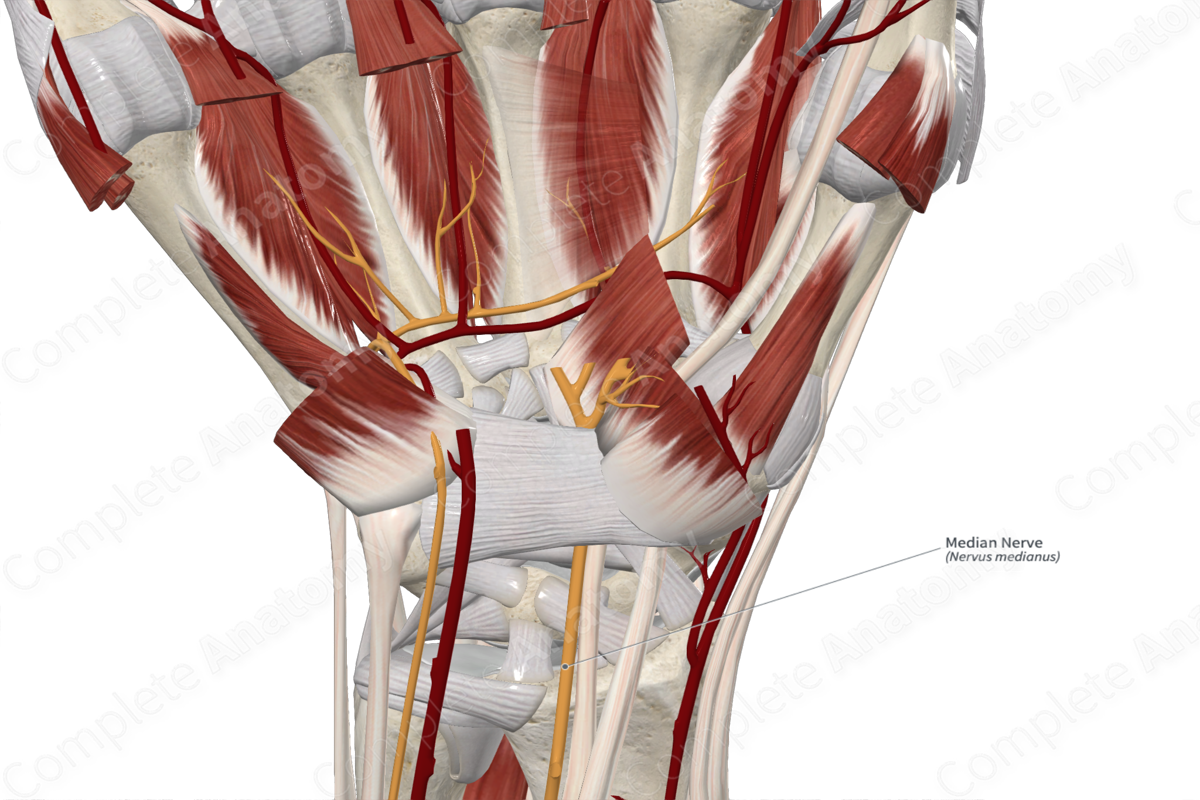
Quick Facts
Origin: Lateral and medial cords of brachial plexus.
Course: In the arm and cubital fossa, it travels adjacent to the brachial artery. In the forearm, posterior to the flexor digitorum superficialis and anterior to the flexor digitorum profundus. Accompanied by anterior interosseous artery.
Branches: Muscular branches to pronator teres, flexor carpi radialis, palmaris longus, and flexor digitorum superficialis, vasomotor nerve to the brachial artery, articular branches to elbow and proximal radioulnar joint, anterior interosseous nerve, palmar cutaneous branches, medial and lateral divisions.
Supply: Sensory and motor innervation. Supplies the elbow, wrist, and intercarpal joints, the anterior muscles of the forearm, muscles of the digits, skin of the palm, thenar eminence.
Origin
The median nerve arises from the union of nerve fibers in the lateral and medial cords of the brachial plexus, lateral to the axillary artery. Thus, it contains nerve fibers from the anterior rami of the fifth cervical to the first thoracic nerves (C5-T1).
Course
From its origin, it travels distally in the arm, adjacent to the brachial artery, where:
—in the upper part of the arm it lies lateral to the brachial artery;
—in the middle part of the arm it lies anterior to the brachial artery;
—in the lower part of the arm it lies medial to the brachial artery.
In the cubital fossa, the median nerve lies medial to the brachial artery, deep to the bicipital aponeurosis and anterior to brachialis. It leaves the cubital fossa by passing between the two heads of pronator teres. Here it crosses the ulnar artery (from medial to lateral side) from which it is separated by the deep head of pronator teres.
In the forearm, the median nerve crosses to the lateral side of the ulnar artery, from which it is separated by the deep head of pronator teres. It passes behind a tendinous bridge between the humeroulnar and radial heads of flexor digitorum superficialis and descends through the forearm posterior and adherent to flexor digitorum superficialis and anterior to flexor digitorum profundus. It is accompanied by the median branch of the anterior interosseous artery.
The median nerve enters the hand by passing through the carpal tunnel (i.e., deep to the flexor retinaculum) along with nine tendons (four each of flexor digitorum superficialis, flexor digitorum profundus, and flexor pollicis longus). Just after emerging from carpal tunnel it divides into lateral and medial divisions.
Branches
Along its course, the median nerve gives off multiple branches.
—In the arm, it gives off the nerve to pronator teres just above the elbow, the vasomotor nerve to the brachial artery, and an articular branch to the elbow joint at or just below the elbow.
—In the cubital fossa, it gives off muscular branches in the cubital fossa to pronator teres, flexor carpi radialis, palmaris longus, and flexor digitorum superficialis. It also gives off articular branches to the elbow and proximal radioulnar joint.
—In the forearm, it gives off the anterior interosseous nerve, as well as palmar cutaneous branches.
—In the hand, it ends by dividing into medial and lateral divisions, which in turn give off their own branches.
Supplied Structures
The median nerve is a mixed nerve, consisting of motor and sensory fibers.
Overall, the median nerve and its branches provide the nerve supply to the elbow, wrist, and intercarpal joints, the anterior muscles of the forearm, muscles of the digits, the skin of the palm, and the thenar eminence.
Learn more about this topic from other Elsevier products
Median Nerve

The median nerve is a sensorimotor nerve that arises from the medial and lateral cords of the brachial plexus.
Median Nerve: What Is It, Location, Innervation, Damage, and More

The median nerve is a sensory and motor nerve of the arm (or upper limb). It arises from the lateral and medial cords of the brachial Learn with Osmosis

